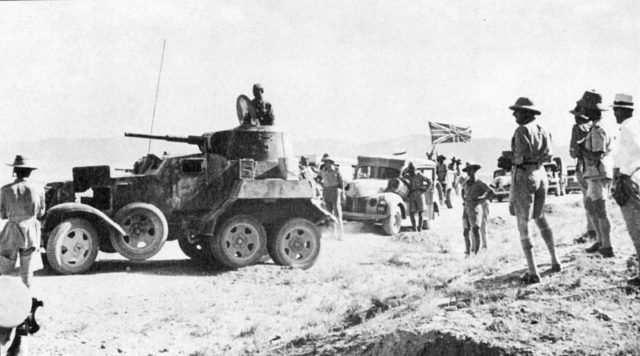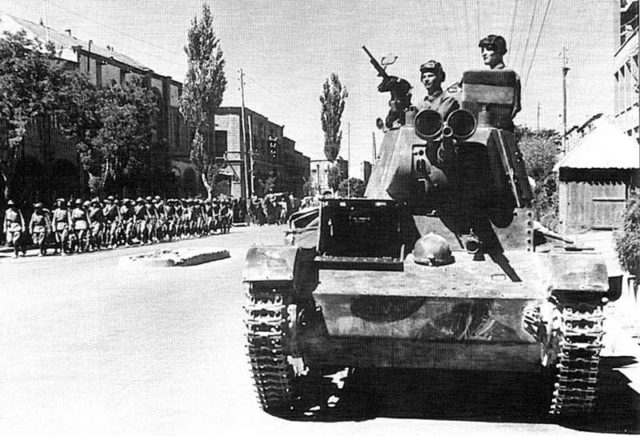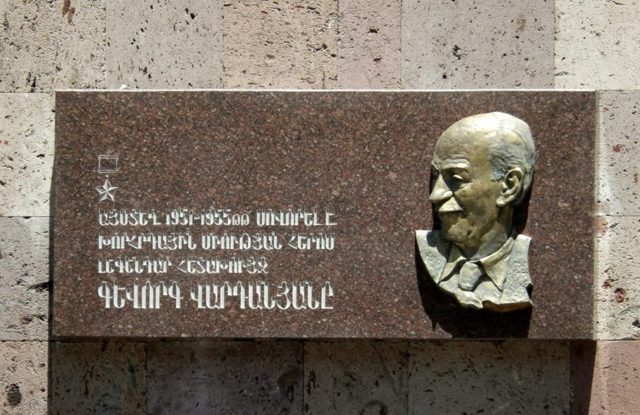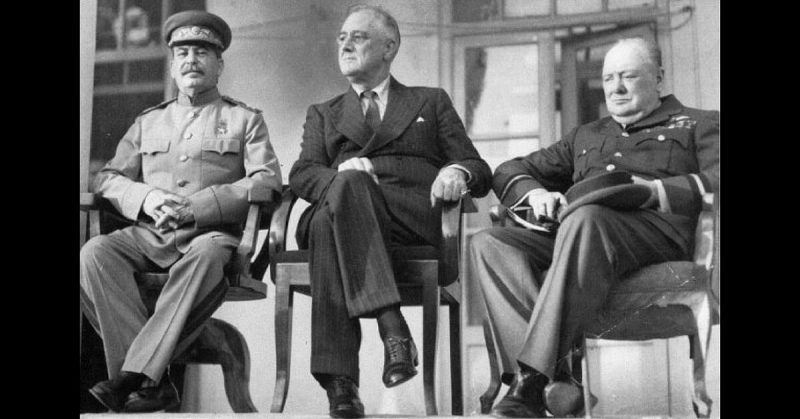During the spy games of WWII, the result of the war was hanging by a thread. Gevorg Vartanian, a young Armenian who joined the Soviet intelligence circle through his father, proved to be a valuable asset, even when he was 16 years old. Vartanian’s father posed as a rich Persian merchant in Tehran for 23 years, having moved there in 1930 when his son was six years old. He worked as an informant and an intelligence officer for the Soviets.
Young Gevorg discovered his gift for learning languages while coping with Persian. Growing up in Persia, which by that time insisted on the name Empire of Iran, certainly influenced the creation of his spy persona – living in a foreign country, adopting a foreign language and lifestyle. He was soon recruited through his father for the KGB. In 1940, he was already responsible for recruiting other agents to join the Soviet side.
Vartanian worked with a spy cell consisting of seven other intelligence agents who successfully foiled a number of Axis operations and captured more than 400 Nazi spies during a brief two-year period. He gained the trust of the agency and, despite his young age, was advancing through the ranks of the KGB.
But, first, why was there a Soviet presence in Iran in the first place? Iran was a troubled country between the two wars. The country’s bitter political struggle turned into a civil war during the 1920s, and it ended with the victory of the future Shah (Emperor) Reza Khan. The Empire of Iran proclaimed neutrality as it intended to straighten out its inner political situation.

The Soviet Union was interested in influencing Iranian policy for a long time, and when World War II broke out, the country became strategically very important. Rich with oil and positioned between the British colonies of Iraq and India and USSR, the country was peacefully occupied by a joint force of Soviet and British forces and the so-called Persian Corridor was established in 1941. The corridor served to deliver military aid to the Soviet Union which was at the time holding the only front in Europe against Nazi Germany.
Since the country served as a sort of a meeting grounds for the Allies and the Soviets, it was agreed in early 1942 that a conference should be held in Teheran, to determine the further development of the war. The conference was planned for November 1943. The Nazis had acquired information on the location of the conference, so they began their careful planning of an assassination that could’ve easily won the war for them. The Tehran Conference was to be headed by the Big Three ― Churchill, Roosevelt, and Stalin. Hitler saw it as an opportunity to decapitate his enemies’ leadership with a single blow.
Meanwhile, the Soviets wanted to know how much the Germans really knew. Nikolay Kuznetsov, an agent who was undercover posing as a German officer in occupied Ukraine, under the name of Paul Siebert, found out that the Germans were aware that the Big Three was to meet in Tehran. He acquired the information while drinking with an SS officer, Ulrich von Ortel, who gave it away in his intoxicated state. Von Ortel knew only that an assassination was planned in Tehran, targeting the Big Three.
It was Operation Long Jump. Hitler took this opportunity seriously, employing his most capable men for the job. The man in charge of the operation was Ernst Kaltenbrunner, the Chief of Security Police. The man who was to lead the action was Otto Skorzeny, Hitler’s trusted commando, notorious for his operations that often used criminal and terrorist methods.
In autumn of 1943, Vartanian and his cell were given the task of preventing the assassination attempt. He was personally responsible for the security of three of the most important men on the planet, and he was barely 19 at the time!

After a thorough counter-intelligence investigation, Vartanian and his team located six German radio operators who were supplying the information two months before the conference opened on the 28th of November, 1943. The radio operators were part of an advance crew which was dropped by parachute near the Iranian town of Qom, some 40 miles away from Tehran. After capturing the radio crew, they were given information on the whereabouts of the assassination squad.
The Soviet agents tailed the assassins back to Tehran. There, the German agents were met with their welcoming committee. It became clear that Abwehr, the German Army Intelligence Service, had a developed network of informants and spies in Iran. They met in a villa that served as their HQ. From this location, the Germans radioed their progress back to Berlin. Even though the messages were encrypted, the Vartanian cell managed to decipher them. Vartanian wrote about his experience later:
“We followed them to Tehran, where the Nazi field station had readied a villa for their stay. They were traveling by camel and were loaded with weapons. While we were watching the group, we established that they had contacted Berlin by radio, and recorded their communication… When we decrypted these radio messages, we learned that the Germans were preparing to land a second group of subversives for a terrorist act — the assassination or abduction of the Big Three. The second group was supposed to be led by Skorzeny himself.”
When the Nazis realized they were being watched, they aborted the mission. All the members of the first group were arrested and forced to contact their handlers under Soviet supervision. The operation got off track and the main group led by Skorzeny never went to Tehran. “The Most Dangerous Man in Europe” and the savior of Benito Mussolini was forced to back down from one of his most ambitious operations ever, all thanks to this young KGB operative.

After the war, Vartanian graduated from the School of Foreign Languages in Yerevan, Armenia, as he was always keen on learning new tongues. It remains unknown whether or not did he retire from his service after the war. He was a bearer of the Hero of the Soviet Union medal and a respected figure in the society. Vartanian met with Churchill’s granddaughter in 2007, and she congratulated him on his contribution to the Allied war effort. Gevorg Vartanian died in 2012, at the age of 87. His death caused a lot of grief in Russia and his homeland, Armenia, for he was loved by the people and perceived as a legendary hero.
Both Vladimir Putin, then Prime Minister, and Dmitri Medvedev, the President of Russian Federation, gave their condolences to Vartanian’s widow Gohar and his friends and relatives. On that occasion, Medvedev described Vartanian as “a legendary intelligence agent, a genuine patriot of his country, a bright and extraordinary person…” He took part in splendid operations, which went down in the history of the Russian foreign intelligence service. His death is an irretrievable loss to his family and all those who knew and highly appreciated the legendary man.”
